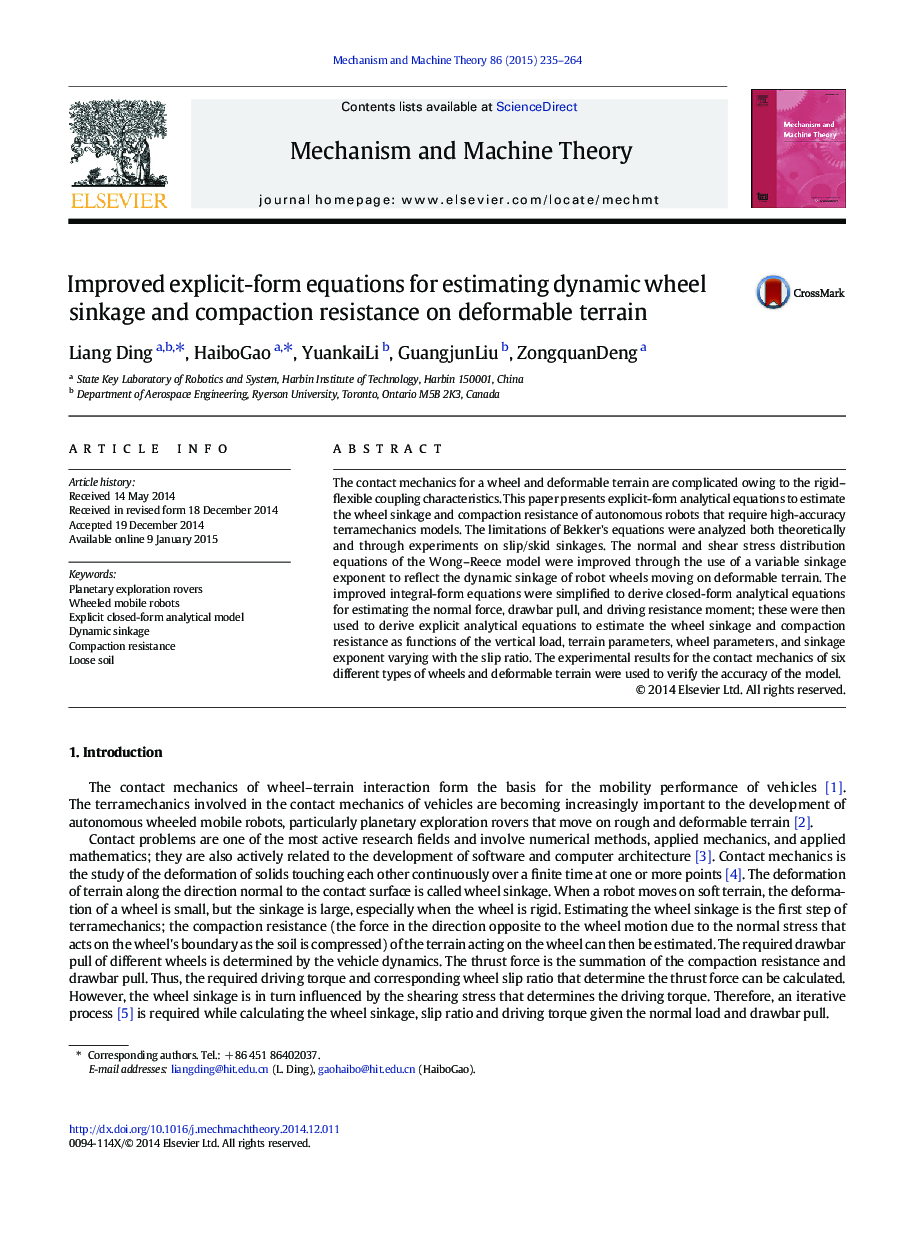| Article ID | Journal | Published Year | Pages | File Type |
|---|---|---|---|---|
| 799574 | Mechanism and Machine Theory | 2015 | 30 Pages |
•Limitations of Bekker's analytical model are analyzed systematically.•Explicit-form analytical equations of calculating dynamic wheel sinkage•Explicit-form equations of compaction resistance considering slip sinkage•Accuracy of these equations is validated using experiential results.
The contact mechanics for a wheel and deformable terrain are complicated owing to the rigid–flexible coupling characteristics. This paper presents explicit-form analytical equations to estimate the wheel sinkage and compaction resistance of autonomous robots that require high-accuracy terramechanics models. The limitations of Bekker's equations were analyzed both theoretically and through experiments on slip/skid sinkages. The normal and shear stress distribution equations of the Wong–Reece model were improved through the use of a variable sinkage exponent to reflect the dynamic sinkage of robot wheels moving on deformable terrain. The improved integral-form equations were simplified to derive closed-form analytical equations for estimating the normal force, drawbar pull, and driving resistance moment; these were then used to derive explicit analytical equations to estimate the wheel sinkage and compaction resistance as functions of the vertical load, terrain parameters, wheel parameters, and sinkage exponent varying with the slip ratio. The experimental results for the contact mechanics of six different types of wheels and deformable terrain were used to verify the accuracy of the model.
